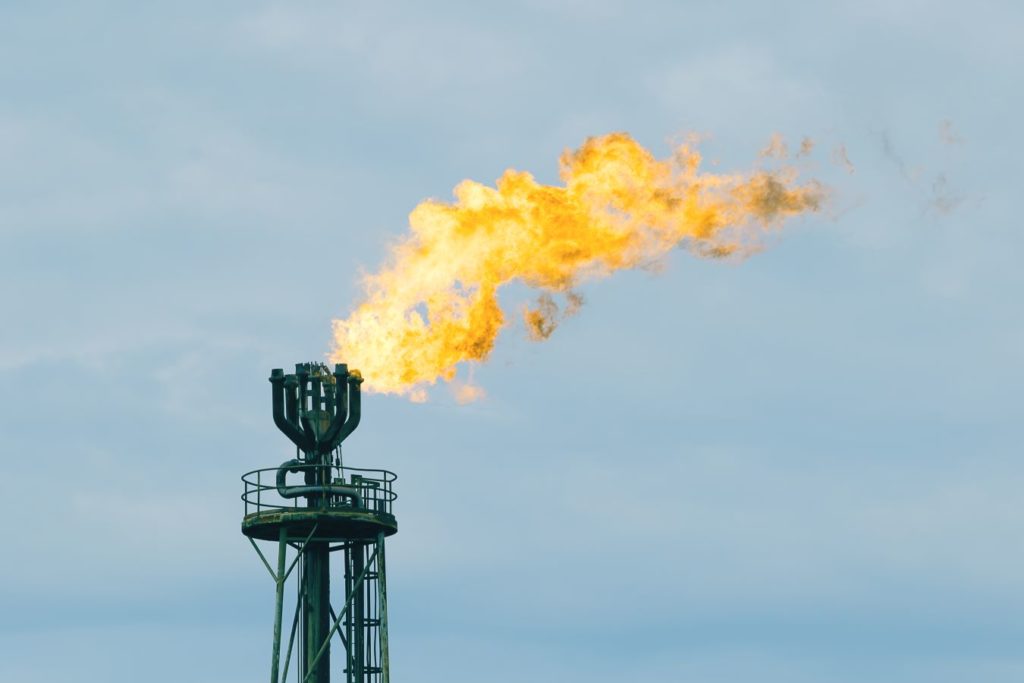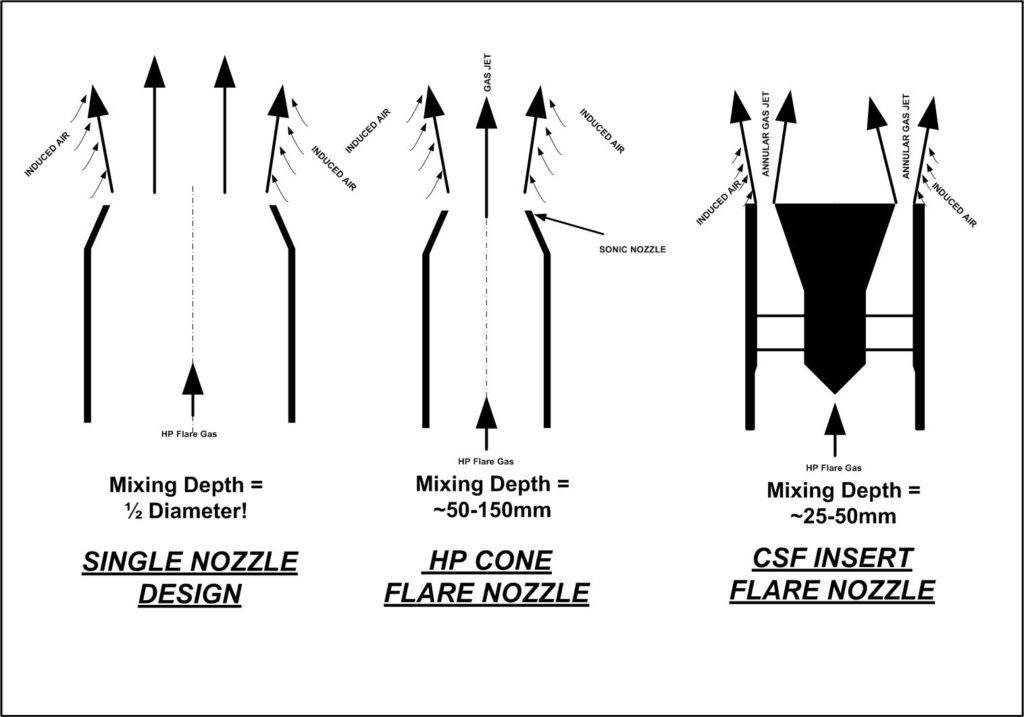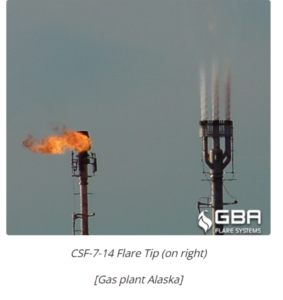
Sonic tips are designed to discharge the flare gas at sonic velocities. The most conventional technology is the multi-arm design, with fixed or variable exit areas.
Advantages
High combustion efficiency at high flowrates resulting in reduced smoke formation.
Can result in lower stack heights and smaller flare header sizes
Lower flame radiation and shorter flame length
Low profile sonic flares built close to grade can have low visual impact because the short low radiation flame can be obscured using berms, fences or trees
Limitations
Requires greater upfront knowledge of flare conditions that will be encountered across the lifetime of the facility
Maintenance of flare tips
Case study
Different designs of sonic flare tip – courtesy of GBA systems


Image contrasts appearance of a conventional flare design (left) to one operating with a sonic tip assembly (right). Image courtesy of GBA systems
Flares are a safety device and many designs require the flare to remain permanently lit. To ensure that there is no ingress of air into the system (which may lead to an explosion) a minimum amount of gas passing through the flare is required. This purge gas is part of safe and reliable operations. For flares that spend extended periods in this standby state the amount of gas consumed is a significant contributor to overall emissions including methane. This may be reduced in a range of flare designs.